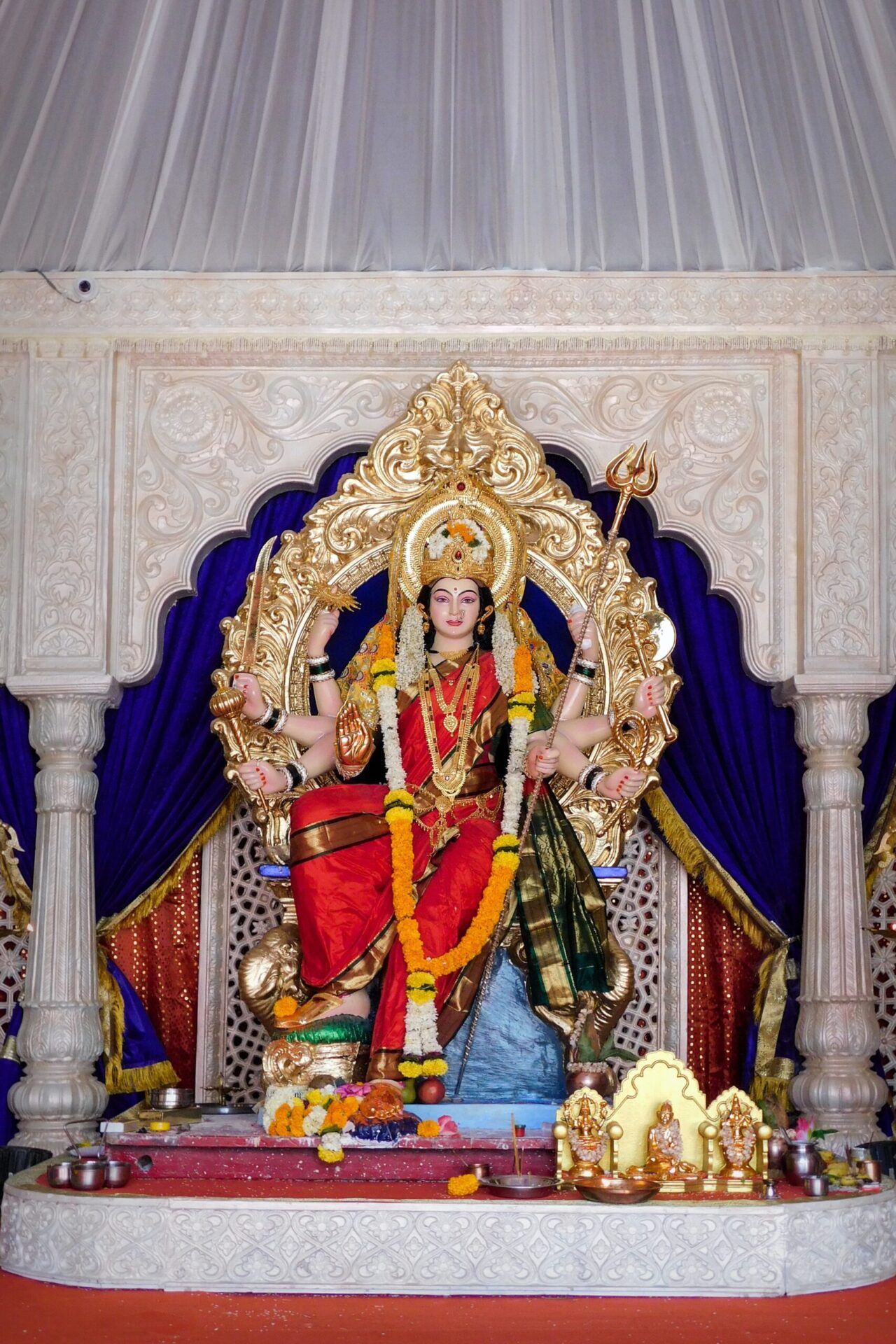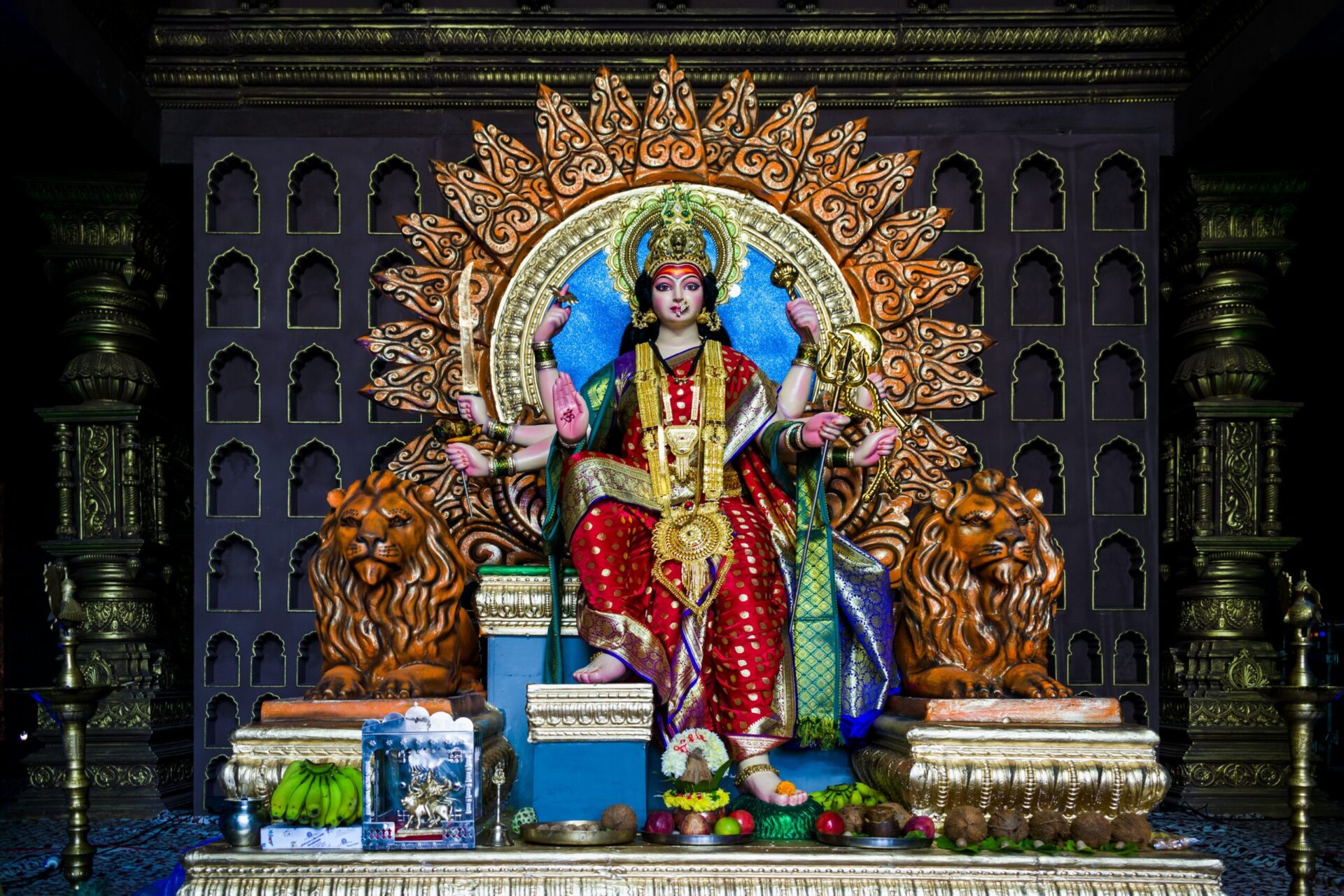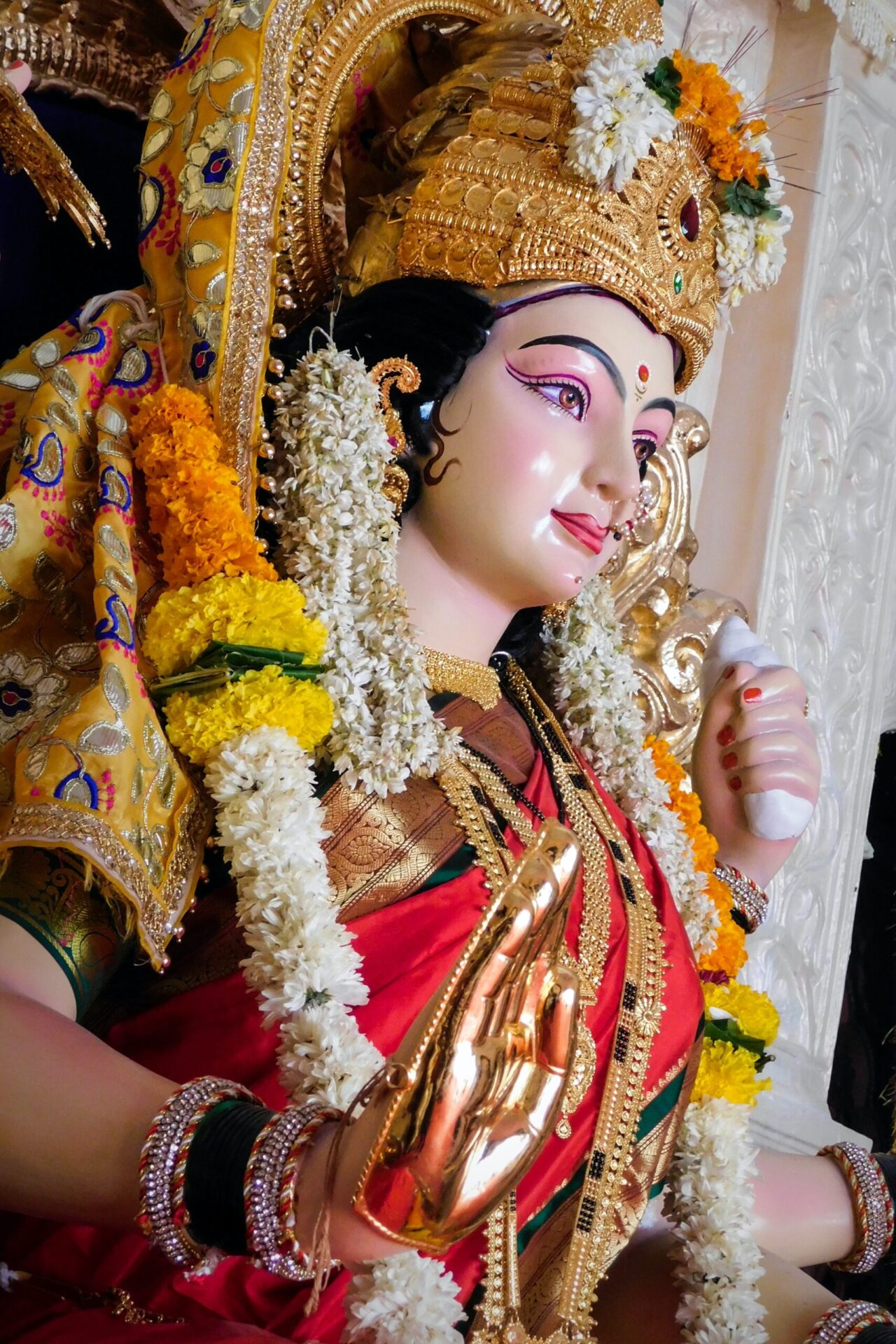Today, let’s embark on a fascinating journey through the myriad forms of the powerful Goddess Durga. With a history dating back centuries, this article explores the diverse manifestations of this divine female deity. From the fierce warrior to the nurturing mother, each form of Goddess Durga has a unique significance and a myriad of intriguing tales waiting to be discovered. So, get ready to be enchanted as we delve into the enchanting world of the various forms of Goddess Durga.

Table of Contents
1. Introduction to Goddess Durga
Goddess Durga, also known as Devi or Shakti, is one of the most revered and celebrated deities in Hinduism. As the embodiment of feminine power, she is worshipped for her strength, courage, and protection. With her many forms and manifestations, she represents different aspects of the divine mother, each carrying unique symbolism and significance. From the fierce warrior goddess to the gentle and nurturing mother, Durga encompasses a range of qualities that inspire devotion and reverence.
2. Historical and Mythological Context
2.1 Origin and Significance of Goddess Durga
The exact origin of Goddess Durga is shrouded in myth and legend, with different interpretations found in various Hindu scriptures. According to one belief, Durga was created by the combined energies of many gods to defeat the demon Mahishasura, who threatened the balance between good and evil. Durga’s creation symbolizes the power of good triumphing over evil and serves as a reminder of the eternal fight against injustice and oppression.
2.2 Legends and Stories
Numerous stories in Hindu mythology revolve around Goddess Durga and her exploits. One such famous tale is the battle between Durga and Mahishasura, a buffalo demon, which lasted for nine days and nights. Durga emerged victorious, slaying Mahishasura and restoring peace and harmony. Other legends recount Durga’s role in vanquishing various demons and protecting the gods and humans from harm.
2.3 Durga in Hindu Scriptures
The significance of Goddess Durga can be seen in various Hindu scriptures, including the Devi Mahatmya, the Ramayana, and the Mahabharata. These texts portray Durga as a courageous and powerful deity, intervening in times of distress to restore order and protect the cosmos. The scriptures illustrate her divine qualities, emphasizing her role as both a protector and a source of strength for her devotees.
3. Major Forms and Manifestations of Goddess Durga
3.1 Maa Durga – The Warrior Goddess
Maa Durga, the most commonly worshipped form of Goddess Durga, is depicted as a fierce warrior ready to battle the forces of evil. She is often portrayed riding a lion or a tiger, symbolizing her untamed power and fearlessness. Maa Durga represents the triumph of righteousness over wickedness, inspiring her devotees to face challenges with courage and determination.
3.2 Goddess Parvati – The Divine Mother
Goddess Parvati is another prominent form of Durga, representing the gentle and nurturing aspect of the feminine divine. She is the consort of Lord Shiva, the embodiment of cosmic consciousness. Parvati is revered as the mother goddess, representing fertility, love, and devotion. Devotees seek her blessings for a harmonious and prosperous family life.
3.3 Mahishasura Mardini – The Destroyer of Demon Mahishasura
Mahishasura Mardini is a specific form of Goddess Durga symbolizing her role as the conqueror of the buffalo demon, Mahishasura. This form highlights her valor and bravery as she slays the demon, restoring peace and harmony. Mahishasura Mardini is often depicted with multiple arms, each holding a weapon, signifying her readiness to combat evil forces.
3.4 Kali – The Fierce and Ferocious
Kali is one of the most fearsome forms of Goddess Durga. With her dark complexion, wild hair, and a garland of skulls around her neck, she represents the destruction of ego and ignorance. Kali is the embodiment of time and death, representing the inevitable cycle of life. She is often depicted dancing on the body of Lord Shiva, symbolizing the dance of creation and destruction.
3.5 Amba or Jagadamba – The Universal Mother
Amba or Jagadamba is a form of Durga that emphasizes her role as the universal mother. She is revered as the creator of the universe and is associated with abundance, fertility, and protection. Amba represents the nurturing and loving aspect of the divine mother, inspiring devotees to seek her blessings for overall well-being and prosperity.
3.6 Bhairavi – The Goddess of Decay
Bhairavi is a fierce form of Goddess Durga associated with decay and dissolution. She represents the transient and impermanent nature of the material world. Bhairavi is often depicted wearing a garland of skulls and holding a trident, symbolizing her power to destroy and transform. Devotees seek her blessings to let go of attachments and embrace the transient nature of existence.
3.7 Chandi – The Embodiment of Divine Power
Chandi is an epithet used for Durga, signifying her embodiment of divine power and energy. She is depicted as a radiant goddess with multiple arms, each holding a weapon. Chandi represents the fierce aspect of Durga, inspiring courage and determination in her devotees. She is worshipped during Navratri, the nine nights dedicated to the worship of the goddess.
3.8 Kamala – The Goddess of Wealth and Prosperity
Kamala is a form of Durga associated with wealth and prosperity. She is depicted seated on a lotus, symbolizing purity and divine consciousness. Kamala is the bestower of material abundance and spiritual riches. Devotees seek her blessings to attain wealth, prosperity, and spiritual growth.
3.9 Annapurna – The Goddess of Food and Nourishment
Annapurna is a manifestation of Durga as the goddess of food and nourishment. She symbolizes the importance of sustenance and nourishment in life. Annapurna is often depicted holding a ladle and a vessel filled with food, representing her ability to provide for the needs of all living beings. Devotees seek her blessings for abundance and fulfillment in their lives.
3.10 Shailaputri – The Daughter of Himalaya
Shailaputri, the first form of Durga, is worshipped on the first day of Navratri. She is depicted as a young girl riding a bull, symbolizing purity and innocence. Shailaputri represents the divine energy that pervades the entire universe. Devotees seek her blessings for strength, stability, and spiritual growth.
4. Symbolism and Attributes of Goddess Durga
4.1 Weapons and Accessories
Goddess Durga is often depicted with various weapons and accessories, each carrying symbolic meaning. Her weapons, such as the trident, sword, and bow, represent her ability to combat evil and protect her devotees. The lotus flower, worn as an ornament, signifies purity and divine consciousness. The conch shell represents the primordial sound of creation.
4.2 Animal Companions
Goddess Durga is often accompanied by different animals, each symbolizing various aspects of her power and grace. The lion or tiger represents her untamed strength and fearlessness. The buffalo represents her victory over evil forces, as seen in the form of Mahishasura Mardini. The owl represents wisdom and is associated with her ability to see through darkness.
4.3 Colors and Attire
Goddess Durga is typically depicted wearing vibrant colors, each carrying symbolic significance. Red symbolizes power, action, and passion. Yellow represents intellect and knowledge. Blue represents divine energy and transcendence. White symbolizes purity and peace. The attire worn by Durga varies according to her different manifestations, reflecting the qualities associated with each form.
4.4 Symbolic Representations
Goddess Durga is often represented in various symbolic ways to convey her divine essence. Her multiple arms symbolize her ability to multitask and accomplish numerous tasks simultaneously. The lotus she carries signifies spiritual enlightenment and purity. The halo or aura surrounding her represents her divine radiance. These symbolic representations inspire devotion and reverence towards the goddess.

5. Worship and Devotion towards Goddess Durga
5.1 Navratri – The Nine Nights of Devotion
Navratri, meaning “nine nights,” is a major Hindu festival dedicated to the worship of Goddess Durga. Celebrated twice a year, during the months of Chaitra (March-April) and Ashwin (September-October), Navratri is marked by elaborate rituals, fasting, music, dance, and devotional gatherings. Devotees engage in prayers, chants, and offerings to honor and seek the blessings of the goddess.
5.2 Durga Puja
Durga Puja is a grand celebration of Goddess Durga, primarily observed in West Bengal, India, and by Bengali communities worldwide. Lasting for ten days, this festival commemorates the victory of Good over Evil. Elaborate pandals (temporary structures) are erected to house beautifully crafted idols of Durga. Devotees offer prayers, perform rituals, and participate in cultural activities to express their devotion and gratitude towards the goddess.
5.3 Other Festivals and Celebrations
Apart from Navratri and Durga Puja, Goddess Durga is worshipped and celebrated in various other festivals and regional traditions across India. Some examples include Kali Puja, celebrated in West Bengal, where Goddess Kali is worshipped as the supreme deity. In South India, the festival of Varalakshmi Vratam is dedicated to the worship of Goddess Lakshmi, often identified with Durga, to seek blessings for wealth and prosperity.
6. Regional Variations and Traditions
6.1 Durga in Bengali Culture
Durga holds a special place in Bengali culture, where she is worshipped with immense fervor and passion during the festival of Durga Puja. Elaborate pandals are constructed, and exquisitely crafted idols of Durga are worshipped for several days. The festival is marked by cultural performances, including traditional dances, music, and processions. Durga Puja is not just a religious event but a significant cultural extravaganza that brings communities together in celebration.
6.2 Durga in North Indian Culture
Goddess Durga is deeply revered in North Indian culture, where she is worshipped during Navratri. Devotees observe fasting and engage in religious ceremonies, such as the recitation of hymns and the offering of prayers. The festival is marked by vibrant and energetic Garba and Dandiya Raas dances, where people come together to celebrate and express their devotion towards the goddess.
6.3 Durga in South Indian Culture
In South India, Goddess Durga is worshipped in various forms, such as Goddess Kamakshi in Tamil Nadu and Goddess Meenakshi in Madurai. The temples dedicated to these goddesses attract devotees from far and wide who seek their blessings for prosperity and fulfillment. The festivals of Navratri and Durga Puja are celebrated with great enthusiasm and devotion, accompanied by traditional rituals and cultural performances.

7. Contemporary Relevance and Influence
7.1 Feminine Power and Empowerment
The worship of Goddess Durga carries profound significance in contemporary times, particularly in the context of women’s empowerment. The goddess represents the innate strength and power present within every woman. Her fierce forms inspire women to embrace their own strength and face challenges with determination. Durga is seen as a symbol of feminine power, encouraging women to break societal barriers and strive for equality and liberation.
7.2 Durga in Contemporary Art and Literature
Goddess Durga’s image and symbolism have transcended religious contexts to find expression in various forms of contemporary art and literature. Paintings, sculptures, and literary works often draw inspiration from Durga’s fierce and compassionate aspects, exploring themes of empowerment, courage, and spirituality. Many contemporary artists and writers depict Durga as a source of inspiration and a symbol of resilience and triumph.
7.3 Durga in Popular Culture
Goddess Durga’s imagery and tales have found their way into popular culture, shaping the collective consciousness of society. She is often portrayed in movies, television shows, and music, reinforcing the archetype of the strong and courageous woman. Durga’s significance is not confined to religious contexts but resonates with people across diverse backgrounds, inspiring them to embrace their inner strength and face life’s challenges head-on.
8. Conclusion
Goddess Durga, with her numerous forms and manifestations, remains an iconic figure in Hindu mythology and religious practices. From the warrior goddess Maa Durga to the nurturing mother Goddess Parvati, each form carries a unique symbolism and significance, inspiring devotion and reverence. The worship and celebration of Durga during festivals like Navratri and Durga Puja reinforce the values of inner strength, protection, and empowerment. As a symbol of feminine power and divine energy, Goddess Durga continues to inspire and guide individuals on their spiritual and personal journeys.